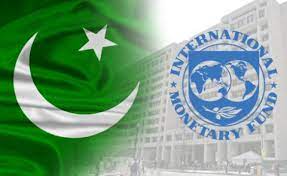Washington DC February 7 2022: IMF estimates that achieving the Sustainable Development Goals will require an additional 16 percent of GDP equivalent to US$48 billion in annual spending by 2030.
While this may be not be feasible in the remaining time, it underlines the urgency to create considerable fiscal space—for example, by broadening the tax base—to make substantial progress toward the SDGs. Beyond resources, it will also require strengthening governance, capacity, and coordination among various stakeholders.
A L S O || R E A D
Pakistan economy once again at crossroad says IMF
Despite recent progress with the social agenda, Pakistan is far from meeting the Sustainable Development Goals (SDGs). It still lags peers’ levels of economic and human development, including higher poverty indicators and lower education and health outcomes.6 Moreover, while income inequality is relatively moderate, gaps in education and health outcomes between the richest and poorest quintiles remain sizeable. Gender inequality is pervasive, with Pakistan ranking very low in the Gender Gap Index (153 out of 156 countries in 2021), mostly reflecting poor economic participation and opportunities for women.7 Progress in these areas will support social outcomes, unleash inclusive growth, and garner broad buy-in for reforms.
Reducing poverty and boosting social protection remains a key pillar of the EFF. With the COVID-related Ehsaas Emergency Cash (EEC) program coming to an end in FY 2022, the authorities are refocusing their efforts on strengthening their regular BISP programs.
The authorities completed the update of the National Socio-Economic Registry (NSER) in October (end-June 2021 SB), covering about 33 million families. They already use the registry for a well-targeted expansion of the BISP beneficiary base and reassessment of Pakistan’s poverty structure, which will facilitate the design of new programs (with the support of international partners).
Staff embraced the authorities’ budgeted envelope of PRs 250 billion for BISP in FY 2022 and called for a full execution. The allocation will support the ongoing expansion of BISP’s regular cash transfer program; both in terms of the number of beneficiaries (by 30 percent to 8 million families by end-FY 2022) and monthly benefit levels (by 8 percent from January 2022).
Going forward, staff also encouraged regularly (i) applying the mechanism for periodic inflation updates of all BISP cash transfers; and (ii) reviewing the value of educational cash transfers under BISP. At the same time, the authorities have recently launched two new social programs outside BISP.
To foster financial inclusion and development, the Kamyab Pakistan Program (KPP) seeks to promote small and medium enterprises (SMEs), agriculture, and low-cost housing financing through highly subsidized loans backed by a 50 percent government guarantee (pari passu). The program has been initially rolled out on a pilot basis in poor areas and aims to reach up to 3 million households and to provide cumulative financing of PKR 1.63 trillion over the next three years. Moreover, to provide relief from high food prices, a new food subsidy program seeks to provide a monthly stipend to 20 million low-income households (covering three products that account for about a quarter of their food layouts). The authorities agreed on the need to ensure full and transparent financing for, and execution of, these new schemes in a sound and transparent way.










